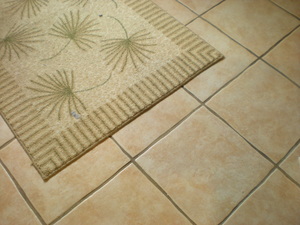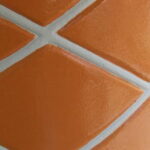I have always loved ceramic tile floors in kitchens, bathrooms, foyers and utility rooms. Even though I prefer hardwood in other areas of the house, ceramic tile floors are extremely easy to maintain and can be used in any room. The problem, of course, is repairing damaged tiles, especially if there is an underlying problem.
Find the Cause
The first step to repairing ceramic tile floors is to figure out why the crack, fissure or break appeared. If you dropped something heavy on the tile this should not be difficult, but sometimes the problem is related to the subfloor on which the tile is mounted.
Foundation problems can necessitate repairing ceramic tile floors, as can improper installation of the tile. If there is no obvious cause for the damage, you will need to decide if you will replace only the broken tiles or if you will rip up the entire floor to uncover the problem.
The latter option is obviously the most expensive, and in most cases it is unnecessary. Temporarily repairing ceramic tile floors that have been damaged due to subfloor issues might buy you several years before you need to do any major structural work.
Remove the Tile
If you have several damaged tiles, it is usually best to approach this task one at a time unless the tiles connect. Repairing ceramic tile floors requires removing both the tile and the surrounding grout, which can take time.
Removing grout is the most difficult part of this task. Using a chisel, cut around the grout to remove it, then use a utility knife to scrape away any remaining material. Once it is gone, you can extract the tile itself with a hammer and chisel, taking care not to crack or break any of the surrounding tiles.
Evening the Subfloor
If there is a problem in the subfloor, you might have an uneven surface that originally caused the tile to break. To fix this, you can simply lay the replacement tile with thin-set or liquid acrylic mortar. It should be spread over the tile space with notched trowel.
After aligning the replacement tile with the other tiles on the floor, you can lay a block of wood over the tile and bang it with a hammer several times to ensure it is firmly set in the mortar. The goal in repairing ceramic tile floors is to avoid damaging the replacement and surrounding tiles, so do this with care. The tile should then sit for 36-48 hours before you lay the grout.
Grouting the Floor
You will need to use similar grout to what was used on the original floor. A sales representative at your local hardware store can help you choose the right grout. Make sure to clean the surface of the tile after you are finished.
Repairing ceramic tile floors takes time, but it is definitely something that homeowners can do themselves in a single weekend. Of course, if you are concerned about a serious foundation or substrate issue, you might want to call a contractor to seek further advice.
Source:
Sean O’Halloran, Repairing Ceramic Floor Tile, DoItYourself.com



